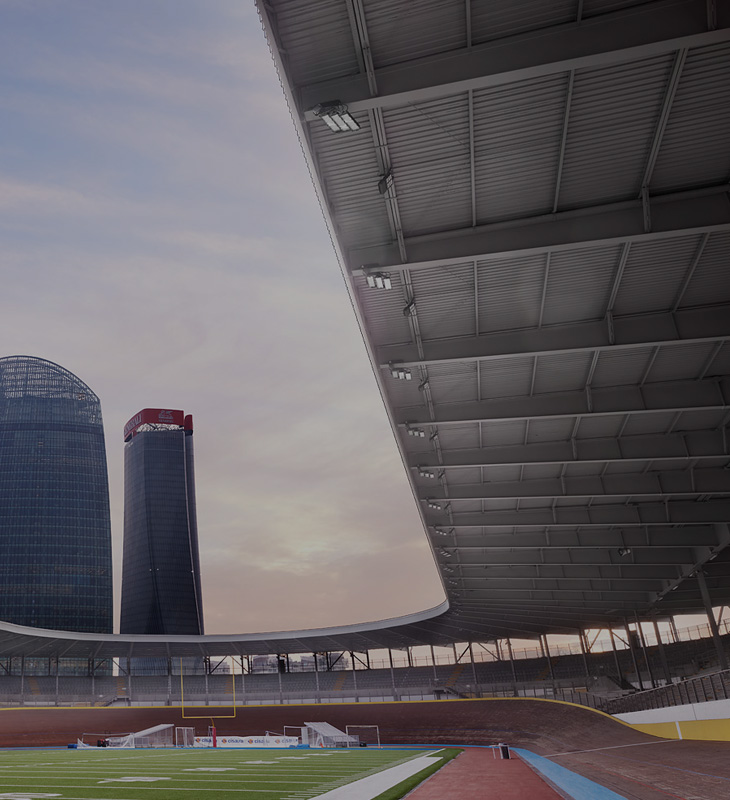
The path to excellence of our Lighting solutions
Gewiss' passion for innovation translates into a constant orientation toward excellence, from product design to after-sales assistance. In the Lighting sector, which includes a complete range of solutions for the most diverse applications, this path is structured to always guarantee maximum quality and safety and the highest standards of reliability.
The selection of components and the analysis of critical issues
Gewiss is aware of the application complexity of each Lighting solution: for this reason, all possible critical issues are identified upstream to select the most efficient and high-performance components, from electronic to mechanical ones.
To create reliable and robust products, we carry out FMEA (Failure Mode and Effect Analysis) design studies in our technical development phase: methodological processes used in the design and engineering fields to identify and evaluate potential failures, their causes and their effects within a system. This approach allows us to significantly reduce the risks of malfunction and, consequently, improve the quality of our devices.


Tests, simulations and prototyping
At Gewiss, we design all the components of our lighting solutions in-house, from optical elements to LED boards, from heat sinks to the mechanical structure of the product. In the simulation phase that follows the technical development stage, a detailed flow accompanies the device from concept to concrete realization with 3D analysis and modeling software. Our goal is to simulate and test the product's behavior in real situations, as only in this way can we guarantee the best optical, thermal and mechanical configuration.
Once the tests have been passed, the product concept materializes in the prototype, created with advanced equipment such as 3D printers and numerically controlled milling machines. These technologies are essential to obtain devices capable of passing stringent regulatory tests and obtaining prestigious certifications such as Ecodesign, which identifies products that comply with the most advanced environmental standards.
Product checks throughout the entire life cycle
Just as the product concept is subjected to specific tests to certify its quality, the prototype also undergoes careful checks of the electrical parameters, wiring, EMC electromagnetic compatibility tests, thermal tests in climatic chambers, flicker and luminous emissions analysis, colorimetric performance, mechanical and corrosion resistance tests and others.
Then, there are the internal field tests that take place before the product is launched on the market: simulations of real-use situations that verify the safety, luminous performance, resistance to different environmental conditions, and durability and reliability of the LED power supplies.
The constant tests to which we subject each device, both before the production phase and throughout its entire life cycle, allow us to make sure that it guarantees the best functional and safety performance in standard and extreme conditions of use.
Internal development and manufacturing of all optical components
The manufacturing of LED optics takes place directly within the Gewiss factories. As pioneers in the use of technopolymer in electrical systems, we can, in fact, count on the experience, technical expertise and best equipment for the development and internal production of these complex and challenging components.
The industrialization of the product is supported by CAE injection molding simulations, necessary to predict and optimize the process before the actual physical creation of the solution because they allow the evaluation of various process parameters, such as temperature, pressure, material flow plastic and its distribution inside the mold, identifying and resolving potential critical issues in advance. Furthermore, in the approval and control of critical components of lighting fixtures we carry out qualitative analysis with 3D optical scanning machines and, at the end of the standard assembly and testing process, accurate Burn-In and Run-in tests.
We also adopt tools and procedures typical of the Automotive sector, such as PPAP (Production Part Approval Process) and FMEA (Failure Mode and Effects Analysis). PPAP involves the evaluation and approval of production parts, documentation of process data, quality control and change management; FMEA identifies and analyzes the potential ways in which a product or process can fail, the effects of such failures and the consequences for the customer.
All these tests and procedures are structured to achieve the highest standards of product quality, safety and conformity: only the best solutions reach the customer.


After launch: analysis and management of returns and preventive replacements
Gewiss’ Lighting solutions are subjected to continuous monitoring even after they are delivered to the market. The analysis of returns, complaints and feedback, as well as the study of the trend of the indicators compared to the quality targets, ensure excellent devices and further improve after-sales assistance with increasingly targeted and reliable solutions.
To explain the process that leads to creating a Gewiss lighting solution, we have created a clear, exhaustive and transparent guide, available for download here: the Lighting Quality Tool.
Show other categories



































